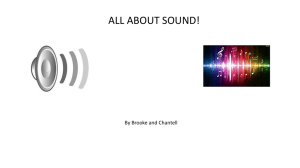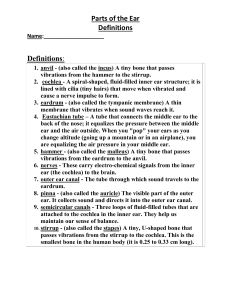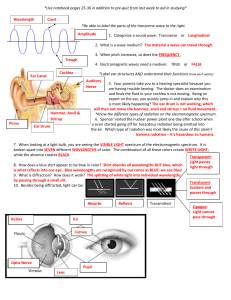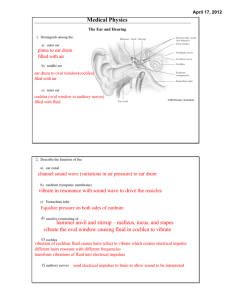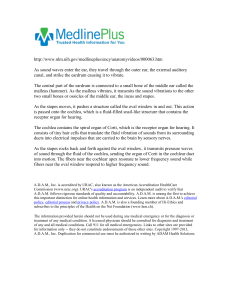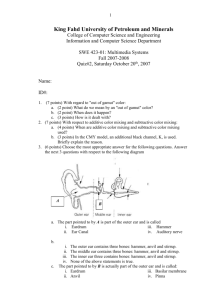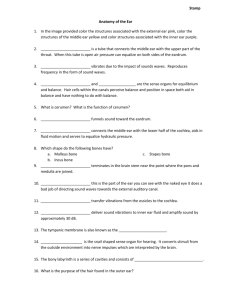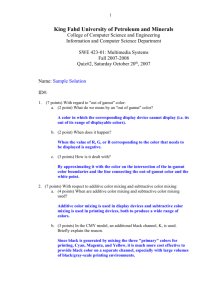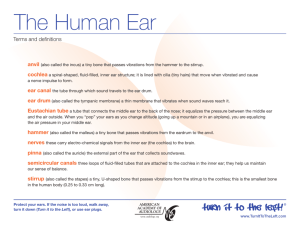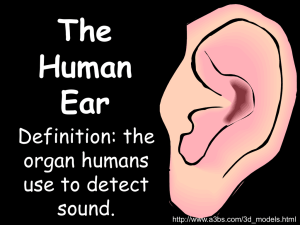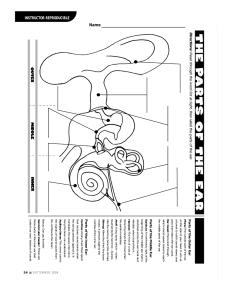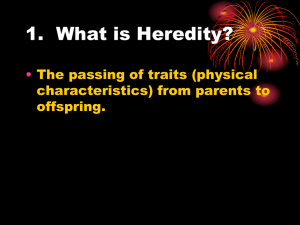Four Winds Nature Institute
advertisement
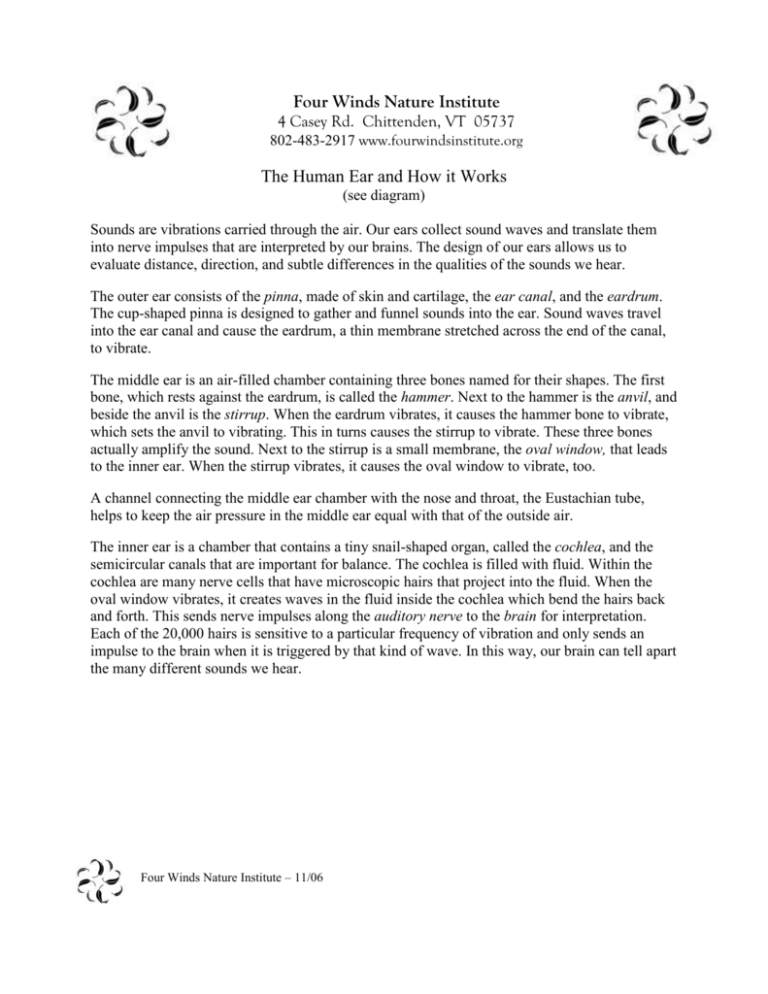
Four Winds Nature Institute 4 Casey Rd. Chittenden, VT 05737 802-483-2917 www.fourwindsinstitute.org The Human Ear and How it Works (see diagram) Sounds are vibrations carried through the air. Our ears collect sound waves and translate them into nerve impulses that are interpreted by our brains. The design of our ears allows us to evaluate distance, direction, and subtle differences in the qualities of the sounds we hear. The outer ear consists of the pinna, made of skin and cartilage, the ear canal, and the eardrum. The cup-shaped pinna is designed to gather and funnel sounds into the ear. Sound waves travel into the ear canal and cause the eardrum, a thin membrane stretched across the end of the canal, to vibrate. The middle ear is an air-filled chamber containing three bones named for their shapes. The first bone, which rests against the eardrum, is called the hammer. Next to the hammer is the anvil, and beside the anvil is the stirrup. When the eardrum vibrates, it causes the hammer bone to vibrate, which sets the anvil to vibrating. This in turns causes the stirrup to vibrate. These three bones actually amplify the sound. Next to the stirrup is a small membrane, the oval window, that leads to the inner ear. When the stirrup vibrates, it causes the oval window to vibrate, too. A channel connecting the middle ear chamber with the nose and throat, the Eustachian tube, helps to keep the air pressure in the middle ear equal with that of the outside air. The inner ear is a chamber that contains a tiny snail-shaped organ, called the cochlea, and the semicircular canals that are important for balance. The cochlea is filled with fluid. Within the cochlea are many nerve cells that have microscopic hairs that project into the fluid. When the oval window vibrates, it creates waves in the fluid inside the cochlea which bend the hairs back and forth. This sends nerve impulses along the auditory nerve to the brain for interpretation. Each of the 20,000 hairs is sensitive to a particular frequency of vibration and only sends an impulse to the brain when it is triggered by that kind of wave. In this way, our brain can tell apart the many different sounds we hear. Four Winds Nature Institute – 11/06
